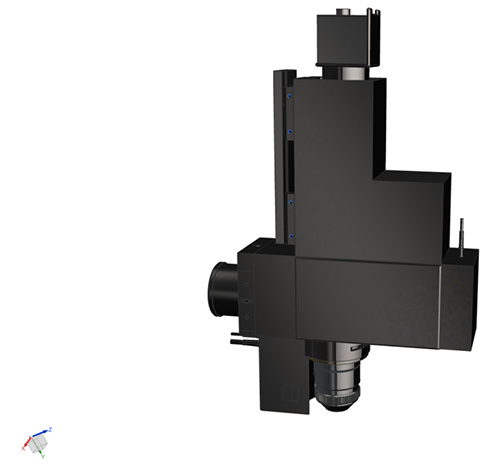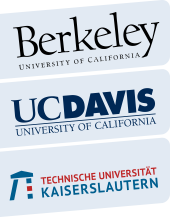

RESEARCH PROGRAM
Title: Extension of a white light interferometer by an optical coherence interferometer and applications for layer thickness determination and porous structure measurement
Name: M.Sc. Andrej Keksel
E-Mail: keksel@mv.uni-kl.de
Phone: +49 (0) 631 - 205 – 3964
Project description:
Starting Situation
CSI, also known as White Light Interferometry (WLI), is commonly used in industrial application for the examination of technical surfaces and quality assurance. Compared to the Coherence Scanning Interferometry (CSI), the Optical Coherence Tomography (OCT) extends the imaging by an additional dimension and can provide depth maps. OCT is primarily used for the investigation of tissue, e.g. ophthalmology, cancer diagnosis, skin and cartilage examination. Furthermore, OCT is a method for determining the thickness of oxide layers which is of high interest because they have protective characteristics for the coated base metal.
Approach
The measurement principle of an OCT is based on CSI. The interference of light leads to visible fringes, which result from optical path differences. Therefore, a reference beam and an object beam are required which carry the height information at a certain position in their correlogram. Due to electromagnetic material interactions of the incident light with the upper layers of a sample, the geometric path information can vary significantly. However, the light, which is reflected by the sample, is used to obtain local and pixel-wise height information of the sample. The evaluation method works for two dimensions and leads to a virtual height map, that can be analyzed e. g. with the help of roughness parameters or algorithms that extract relevant features.
In addition to the new virtual measurement device, which will base on previous work of GPU-based computation, porous, additive manufactured components and components with defined layer thicknesses are simulated for virtual measurements in order to provide adequate samples for the verification of the models.
Expected Results
With this work, the interaction between the virtual measuring object and the virtual measuring device will be used to better interpret measurement results on the one hand, and to optimize the physical measuring device in relation to the measurement task on the other hand. Additionally to the experimental verification of the model, environmental effects that influence the measuring results are modeled. In doing so, contamination of the measuring object and the influence of mechanical disturbances such as vibrations are described. The consideration of these factors serves for the optimization of the measuring device for specific measuring tasks.

Figure 1: Virtual setup of the coherence scanning interferometer,
which will be extended by optical coherence tomography (OCT)

